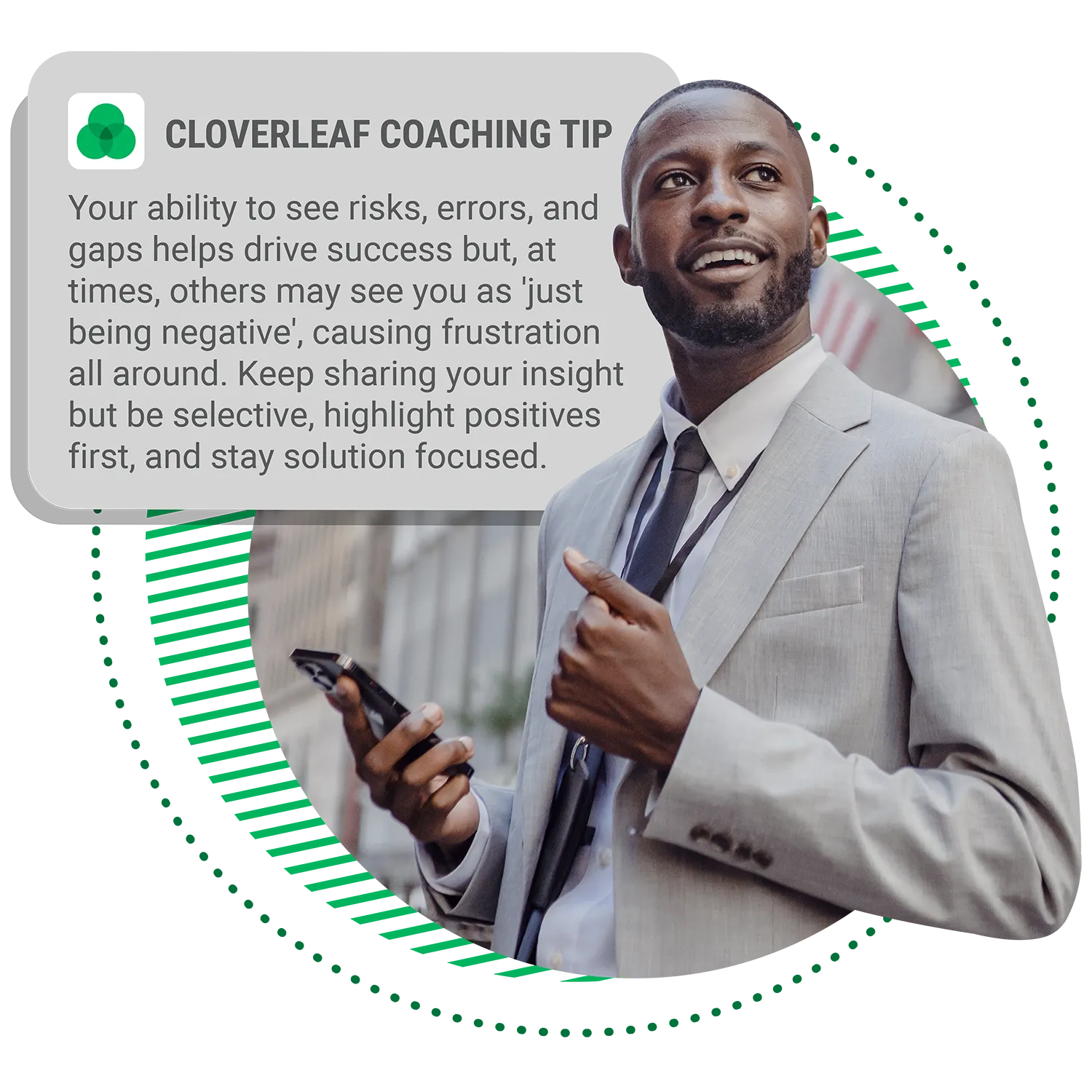Today’s leaders are navigating an increasingly complex challenge: building cohesive, high-performing teams in a hybrid and remote work environment. Misaligned goals, fragmented communication, and inconsistent collaboration often lead to frustration, reduced productivity, and disengaged teams. As coaches and consultants, you’re frequently called in to resolve these issues, yet scaling traditional 1-1 coaching approaches to address the intricate dynamics of modern teams can feel like an uphill battle.
These challenges demand a more holistic approach—one that goes beyond individual coaching to address the team as a dynamic whole. Team coaching offers this solution by providing a structured, scalable method to unify diverse teams, drive sustained behavioral change, and align collective efforts toward shared goals. Rather than patching up problems as they arise, team coaching equips teams with the tools and strategies to anticipate and overcome these hurdles together.
In this article, we’ll guide you through a practical, step-by-step process for designing and implementing a team coaching program that meets these needs. From gathering actionable insights and setting clear objectives to structuring impactful sessions and tracking progress, you’ll discover how to create a program that addresses immediate concerns and builds a foundation for long-term success.
Get the High Impact Coach Crash Course to see how to build a coaching business that delivers more value, serves more clients, and grows more revenue without burning you out.

First, Does Your Approach To Team Coaching Need Reimagining?
Leaders and organizations often find themselves confined by the traditional limits of 1-1 coaching: high costs, restricted access, and a narrow focus on individual development that fails to address the broader team dynamics. These limitations can leave critical team issues unaddressed, leading to misalignment, communication breakdowns, and stalled progress.
Let’s be honest: Traditional coaching methods are great, but they’re often not enough. You already know this. The real challenge—and opportunity—lies in scaling coaching beyond the individual to the entire team. Modern, tech-savvy team coaching breaks free from the limitations of conventional approaches. It’s about more than just keeping everyone on the same page—it’s about rewriting the entire playbook.
Team coaching promotes continuous development across every level, making sure everyone—from the newest hire to the most seasoned executive—grows in sync. It’s not just about ticking the boxes on individual improvement; it’s about embedding those skills into the team’s DNA so they’re prepared to tackle challenges head-on and drive real, lasting success.
Imagine the shift when team coaching realigns communication and goals. Suddenly, what once felt like insurmountable roadblocks become stepping stones to growth. With each voice contributing, new strategies emerge—creating a unified team that’s not just connected, but resilient and ready to tackle challenges head-on.
Shift your coaching business from hourly billing to predictable revenue
Ready to finally move beyond hourly limits? Let’s start building your profitable coaching business today


How To Create A High Impact Team Coaching Program
Designing an effective team coaching program requires more than just a plan—it demands a strategic approach that challenges the way you think about team development. As coaches, it’s easy to rely on what we know works for individuals, but scaling those practices to a team level? That’s where the real work begins.
This guide isn’t just about following a static approach; it’s about using a framework to create a customized program that is unique to the team. Gathering insights isn’t just about collecting data—it’s about actively digging deep to uncover what truly drives each team you coach. Setting goals shouldn’t feel routine—it should feel like crafting a vision that challenges the status quo of every culture. Structured sessions are not about following a script but about creating an experience that resonates with those participating.
Whether you’re reassessing how you track progress or reimagining how you engage with your team, this guide will equip you with the tools to create a program that’s not just effective but unique.
Step 1: Collect Anonymous Team Data
Before diving into the coaching program, starting with a deep understanding of your team’s current dynamics is crucial. Gathering honest, unfiltered feedback is essential, as it reveals surface-level issues and the underlying challenges that may be holding the team back. Using anonymous surveys or assessments, you can create a safe space for team members to voice their thoughts and concerns without fear of judgment, ensuring the data you collect is candid and actionable.
Let’s think beyond the usual data-gathering routine: this step is about truly hearing the team’s collective voice. The goal is to uncover the strengths that can be leveraged and the areas for growth that need addressing, setting the stage for a coaching program that is not only relevant but transformative.
Tools: Start by designing a brief yet targeted survey that digs into critical areas of team dynamics. Consider questions that provoke deeper reflection, such as:
- How effectively does our team communicate? (Scale of 1-10)
- What communication challenges have you noticed within the team?
- Do you feel that you can openly share your thoughts and ideas with the team without fear of judgment? (Yes/No)
- If no, what are the barriers to building trust within the team?
- Do you feel that everyone on the team understands their role and responsibilities? (Yes/No)
- How well do individual strengths align with team goals?
- Do you feel your skills and strengths are being fully utilized in your current role? (Yes/No)
- What additional strengths do you believe the team should leverage more?
- Do you have the tools and resources you need to do your job effectively? (Yes/No)
- If not, what resources are missing?
- Are there areas where the team could benefit from further development or training? (Yes/No)
- What specific skills or knowledge areas would you like to see the team develop?
- How effective is the team’s decision-making process? (Scale of 1-10)
- What could improve the way we make decisions as a team?
Using this data, determine focus areas to discuss in session one based on date, such as Team communication, conflict resolution, and collaboration effectiveness.
Outcome: The anonymized data collected through this process will highlight key areas for development and growth, serving as the foundation for a customized, impactful team coaching program.
Step 2: Define Clear Objectives and Outcomes in Session 1
With the insights gathered from your data, it’s time to translate those findings into actionable objectives. This step is crucial—it’s where your team coaching program begins to take shape, and involving the entire team in this process is essential. After all, when objectives are co-created, they’re more likely to resonate and drive meaningful change.
But here’s the challenge: Don’t settle for vague goals. Each objective should be laser-focused, measurable, and directly tied to your collected data. This is your opportunity to move from insights to impact. For example:
- Objective: Enhance team communication and reduce misunderstandings.
- Expected Outcome: A 30% decrease in communication-related conflicts within three months.
This level of specificity not only aligns your sessions with the team’s needs but also provides clear benchmarks for measuring progress. Remember, your objectives are the roadmap for your program—make sure they lead somewhere transformative.
Step 3: Structure the Team Coaching Sessions
Now that you’ve set clear objectives, the next step is to design sessions that are aligned with these goals and engaging and impactful. This isn’t about checking off a list of activities but crafting experiences that drive real change.
Each session should build on the last, creating a cohesive journey that moves the team closer to the desired outcomes. Here’s a structure to consider:
- Session Topics: Trust-building exercises, effective communication strategies, collaborative problem-solving.
- Activities: Group discussions, role-playing scenarios, peer feedback sessions.
- Expected Outcomes: Improved trust, clearer communication, and enhanced problem-solving skills.
The key here is interaction. Sessions should be dynamic and responsive, encouraging active participation and ensuring that every member feels engaged and valued. By structuring your sessions this way, you’ll not only make the content more memorable but also more actionable, leading to tangible improvements in team dynamics.
Step 4: Create Benchmarks of Success
Once your program is underway, it’s essential to establish benchmarks that will help you measure success and keep the program on track. These benchmarks shouldn’t be arbitrary—they need to be tightly aligned with your objectives and flexible enough to allow for adjustments as the program evolves.
But here’s the key: Benchmarks are not just milestones but indicators of whether the coaching program is making a real difference. They should reflect both the immediate and long-term impact on the team’s dynamics and performance. For example:
- Short-Term Benchmarks: Increased participation in discussions and early signs of improved communication.
- Mid-Term Benchmarks: Reduction in team conflicts and more effective collaboration on projects.
- Long-Term Benchmarks: Achieving the overall objectives and sustained improvement in team dynamics.
Regularly reviewing these benchmarks isn’t just about tracking progress—it’s about ensuring the program remains responsive to the team’s needs. By staying vigilant and adaptive, you can make informed adjustments that keep the program effective and relevant, driving continuous improvement.

Step 5: Amplify Your Coaching Program with Automated Coaching Tools
To truly elevate the impact of your team coaching program, integrating advanced tools like automated coaching can significantly extend your reach and effectiveness. This isn’t about substituting the human touch that is essential in coaching—it’s about reinforcing your efforts with real-time, personalized insights that are seamlessly integrated into your team’s daily workflow.
See How To Transform Assessments Into More Revenue For You
As a coach, your expertise and intuition are invaluable. However, there’s a limit to how much individualized support you can provide, particularly in larger teams or organizations. Automated coaching tools, such as Cloverleaf’s Automated Coaching™, empower you to deliver consistent, tailored coaching insights directly to your team members in real time. These tools can be especially powerful in several key areas:
- Real-Time Data-Driven Insights: Automated coaching tools analyze team dynamics and individual behaviors, offering a depth of understanding that goes beyond surface-level observations. Imagine having access to data that illuminates not just what’s happening within your team but why it’s happening—allowing you to proactively address issues before they escalate.
- Personalized Coaching Tips: Ensuring your guidance resonates with each team member can be challenging. Automated coaching delivers personalized tips and strategies that align with each team member’s unique strengths, communication styles, and areas for growth, ensuring that your coaching is relevant and deeply impactful.
- Continuous Development: Coaching sessions are powerful, but their impact can diminish over time if not reinforced. Automated coaching tools provide ongoing support and reminders, embedding the lessons from your sessions into the team’s daily interactions. This ensures that progress is sustained and team members continue to grow long after the coaching session ends.
Perhaps think of it like adding a skilled assistant to your coaching team—one who works around the clock, providing personalized guidance to each team member based on real-time data. This assistant never tires, continuously reinforcing the specific insights you’ve shared and ensuring that every coaching session’s lessons are embedded into the team’s daily workflow.
Just as a skilled assistant amplifies your effectiveness by handling detailed follow-ups and personalized support, automated coaching tools extend your reach, allowing your influence to be felt consistently, even when you’re not physically present. It’s not about replacing your expertise but about enhancing it—making sure that the impact of your coaching is sustained and that every team member receives the ongoing support they need to grow and succeed.
Implementing Team Coaching Programs With Ease
Turning a well-designed coaching program into reality takes more than just planning—it requires confidence, adaptability, and a deep understanding of your team’s unique dynamics. Bringing your team coaching program to life is where your expertise truly shines.

Implementation is where theory meets practice, and it’s often the stage where many coaching programs stumble. But with the right strategies in place, you can lead confidently, ensuring that your team coaching program takes root and thrives. This guide is here to support you through each critical phase of implementation, from keeping participants engaged to leveraging technology that reinforces your coaching efforts long after the sessions end.
You can move forward with the assurance that you have the tools, insights, and strategies to turn your team coaching vision into a powerful reality.
1. Use Best Practices for Engaging and Motivating Participants
Effective team coaching is about more than just delivering insights—it’s about making those insights resonate with your team members and motivating them to actively engage in the coaching process. The challenge lies in ensuring that every participant feels connected to the content, sees its relevance to their own experience, and is inspired to apply it in their daily work.
A. Tailor Coaching to Individual Needs:
Every participant has unique strengths, challenges, and perspectives. Generic advice won’t cut it. Tailor your coaching to each individual by leveraging micro coaching moments. Tools that can deliver personalized insights that align with each participant’s specific context help make the coaching more relevant and impactful. When team members see that the coaching directly applies to their work and personal growth, they’re more likely to engage deeply and take ownership of their development.
B. Encourage Active Participation:
Engagement isn’t just about showing up—it’s about actively participating. Encourage methods that require involvement through real-time feedback, discussions, or interactive exercises. This dynamic approach keeps participants interested and strengthens a deeper understanding of the material. When team members are actively involved, they move from passive recipients to active learners, which is crucial for lasting change.
C. Maintain Momentum with Frequent Touchpoints:
Keeping participants engaged over time is key to ensuring the long-term success of your coaching program. Frequent touchpoints, such as brief, consistent coaching nudges, can help maintain momentum and reinforce learning. These nudges, integrated seamlessly into the team’s daily workflow, serve as reminders and motivators, ensuring that the coaching content remains top-of-mind. (And yes, Cloverleaf can automate these nudges for you!)
2. Unify The Team Coaching Experiences
One of the greatest challenges in a team coaching environment is ensuring that every participant not only understands the material but also applies it in a way that contributes to a unified team dynamic. Cloverleaf’s platform is designed to bring everyone onto the same page, creating a cohesive learning experience that resonates throughout the entire organization.
A. Create Seamless, Personalized Coaching Journeys:
Cloverleaf’s Automated Coaching™ provides real-time, personalized coaching insights directly within the tools your team already uses, like Slack, Microsoft Teams, or email. This approach integrates coaching into the daily workflow, ensuring that learning isn’t siloed but rather shared and experienced collectively across the team. As each member receives tailored guidance, the entire team moves forward together, united in their development journey.
B. Centralize Insights for a Cohesive Perspective:
The challenge of coordinating various assessments and feedback loops can fragment the learning experience, leading to disjointed development efforts. Cloverleaf addresses this by centralizing assessments, providing a comprehensive view of each team member’s strengths and areas for growth. This unified perspective allows coaches to address the team’s needs holistically, ensuring everyone is aligned and moving towards common goals, building stronger team cohesion.
C. Scale Coaching Across the Organization for Inclusive Growth:
Often, coaching is confined to a few key individuals, leaving others behind. Cloverleaf democratizes the coaching process by making it scalable across the entire organization, ensuring that every team member has access to the same high-quality development opportunities. This inclusivity fosters a shared learning experience, where growth is a collective effort rather than an individual pursuit, ultimately leading to a more unified and empowered team.
D. Sustain Engagement and Unify Learning with Microlearning:
Cloverleaf’s microlearning platform is designed to keep the learning experience fresh and engaging. These bite-sized lessons can be easily integrated into your team’s routine, ensuring that key concepts are consistently reinforced across the board. Maintaining this steady learning rhythm helps unify the team’s development, ensuring everyone is aligned and progressing together.
By integrating Cloverleaf into your team coaching program, you can create a truly unified coaching experience in which each member’s growth contributes to the team’s collective strength, and learning becomes an ongoing, shared journey rather than a series of isolated events.
3. Maintain Consistency in Coaching
Consistency is the bedrock of effective coaching, essential for reinforcing learning and fostering long-term behavioral change. Without it, even the most insightful coaching can lose its impact over time. Here’s how you can ensure that your coaching approach remains steady and effective throughout your program:
A. Establish a Clear Coaching Framework:
Begin by setting up a well-defined coaching framework that includes consistent language, tools, and approaches. This framework should be the guiding star for all your coaching sessions, ensuring that no matter who is coaching or participating, the experience remains cohesive and aligned. Consistency in language and tools helps prevent mixed messages and keeps everyone on the same page, which is critical for building trust and ensuring that the coaching sticks.
B. As A Coach, Stay Informed and Updated:
Coaching isn’t static—it evolves with new techniques, tools, and insights. Encourage your coaches to continuously update their knowledge and stay informed about the latest developments in coaching methodologies. This ongoing learning ensures that they bring fresh, relevant perspectives to each session while maintaining the consistency needed to reinforce key concepts across the board.
C. Leverage Automation for Consistent Messaging:
Automated Coaching™ can play a vital role in maintaining consistency throughout your coaching program. By delivering timely, personalized coaching messages that align with your established framework, Cloverleaf ensures that participants receive ongoing support even outside of formal coaching sessions. This continuity helps reinforce key concepts, ensuring the lessons learned during coaching are consistently applied in daily work.
Consistency isn’t just about repetition—it’s about creating a reliable, cohesive experience that helps team members internalize and apply the coaching principles over the long term. Establishing a clear framework, staying updated on coaching best practices, and using automated tools to reinforce your messaging can ensure that your coaching program drives meaningful and lasting change.
Measuring Success in Team Coaching
The true measure of a successful team coaching program lies in clear, measurable outcomes. While subjective feedback is valuable, hard data provides a more definitive picture of your program’s impact. To ensure your efforts make a tangible difference, focus on key metrics such as enhanced team communication, increased collaboration, and individual performance improvements.
Utilize Data to Track Progress:
Leveraging data is essential for tracking progress and making informed adjustments to your coaching strategy. Tools that provide real-time data on your team’s dynamics can help you monitor these metrics seamlessly, allowing you to identify areas for improvement and ensure that your coaching efforts are aligned with the team’s goals.
Incorporate Case Studies and Testimonials:
Another effective measure of success is by incorporating case studies and testimonials into your program design. Real-world examples can highlight proven successes and build trust by showcasing tangible results where teams have thrived through coaching. Sharing these stories can reinforce the value of your program, making it more relatable and credible to participants and stakeholders.
Building Teams That Thrive: The True Power of Coaching
At its core, a successful team coaching program does more than improve skills or resolve conflicts—it reshapes the fabric of a team’s operations. It’s about creating an environment where communication flows effortlessly, collaboration becomes second nature, and every team member feels empowered to contribute their best.
True transformation doesn’t happen overnight. It results from sustained effort, continuous learning, and a commitment to fostering growth at every level. By integrating real-time feedback, setting clear, measurable goals, and leveraging the right tools, you can cultivate a team culture that’s resilient and adaptive—capable of thriving in any environment.
As a coach, your role isn’t just to guide and inspire—to help those you work with see beyond their immediate tasks and understand the bigger picture. When your coaching program aligns with the organization’s broader goals, it becomes a powerful tool for driving long-term success. The journey might be challenging, but the rewards are undeniable: a stronger, more unified team that’s prepared to excel.
Your Next Step:
If you’re ready to take your team coaching program to the next level, now is the time to explore how automated coaching can amplify your impact. Tools like Cloverleaf offer the consistency, personalization, and scalability needed to ensure that your coaching efforts resonate long after the sessions are over.
Are you ready to see the impact for yourself? Schedule a Cloverleaf demo today to learn more about how automated coaching could scale the impact of your team coaching program.








